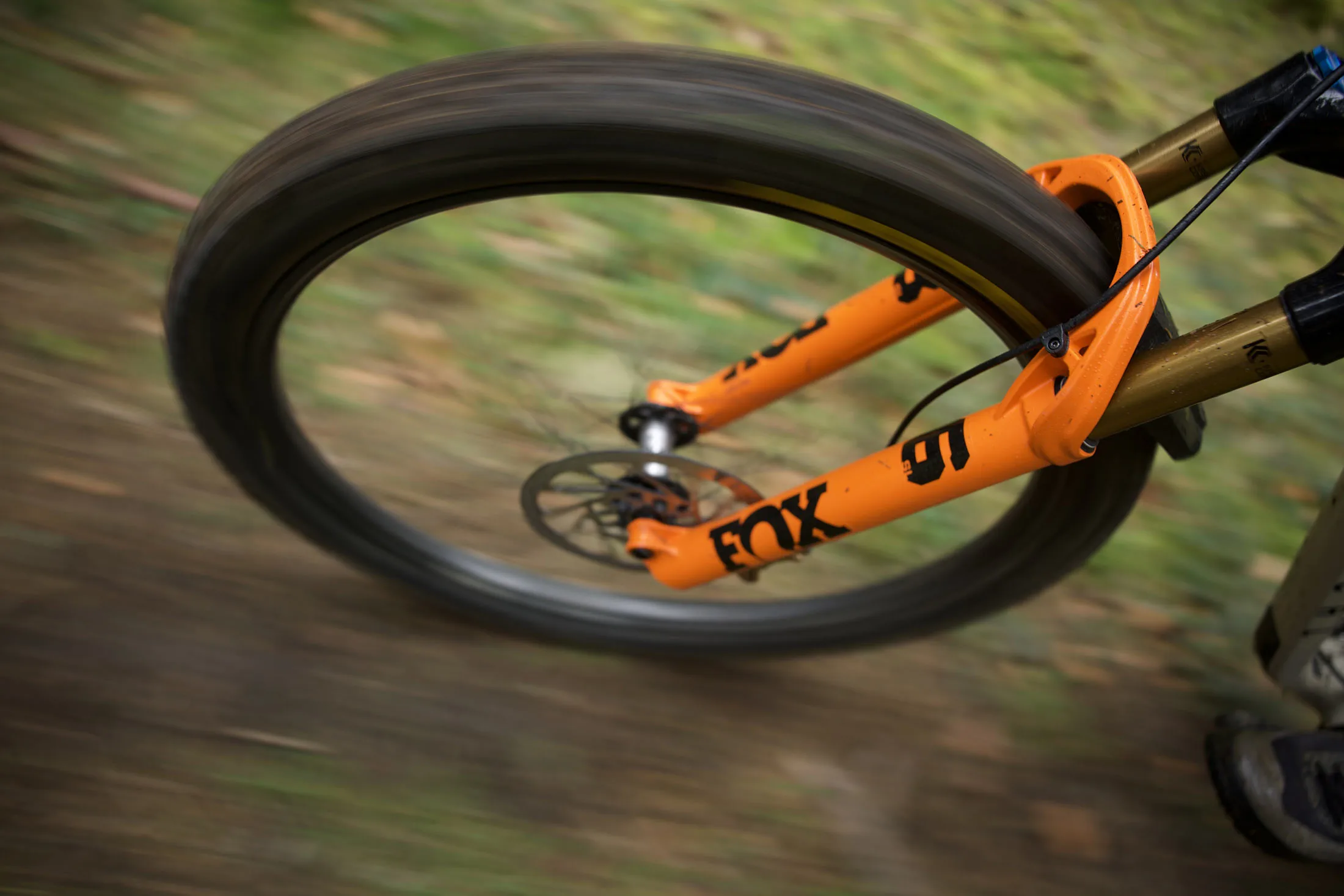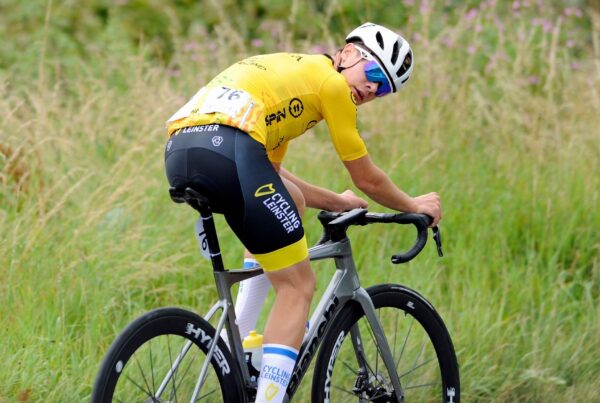
.
.
.
#Fox36 #MountainBiking #TrailTech #AllMountain #BikeForks #Fox36SL #BikeInnovation #SuspensionUpgrade #BikeTech2026 #RideSmooth #BikePerformance #FoxForkUpgrade #BikeEngineering #TrailRiders #BikeStiffness
Source link
Fox has unveiled a complete redesign of its 36 series forks, introducing two new models—the Fox 36 and Fox 36 SL—that cater to different segments of mountain biking. These forks incorporate advanced technologies to deliver smoother, stiffer, and lighter performance, building on the innovations seen in the recently updated Fox 34 SL. Here’s a detailed breakdown of the new features and improvements:
Key Highlights
- Two New Models: The Fox 36 is optimized for all-mountain riding with 140-160mm travel, while the Fox 36 SL targets trail riders with 120-140mm travel. Both forks aim to provide stiffness and performance without the added weight.
- Generative Design: Both forks feature generative design processes, which optimize material placement for weight savings and increased stiffness. The Fox 36 boasts 20% more torsional stiffness, while the 36 SL is 20% stiffer than the Fox 34 it replaces.
- Compliant Air Spring: A new “GlideCore” Compliant Air Spring reduces friction under lateral loads, ensuring smoother performance when encountering obstacles like roots and rocks.
- Shared Upgrades: Both forks benefit from longer bushing overlap (up to 30mm more than previous models) and relocated bypass channels, which reduce friction and improve smoothness.
- Weight Savings: The Fox 36 SL is the lightest 36 ever, weighing just 1755g, while the Fox 36 maintains a competitive weight of 1920g despite its increased stiffness.
Divergence in the Forks
Fox has restructured its fork lineup to better cater to specific riding styles:
- Fox 32 Step Cast: For XC bikes with 100mm travel.
- Fox 34 SL: For XC to downcountry bikes with 110-130mm travel.
- Fox 36 SL: For lightweight trail bikes with 120-140mm travel.
- Fox 36: For trail to all-mountain bikes with 140-160mm travel.
- Fox 38: For enduro bikes with 160-180mm travel.
The goal was to make the Fox 36 SL as stiff as a 36 but as light as a 34, and the Fox 36 as stiff as a 38 but as light as a 36.
Fox 36 Tech Details
- Chassis: The new Fox 36 features an all-new chassis designed to save weight while increasing stiffness. It rides more like a Fox 38 but is significantly lighter.
- Generative Design: The arch features windows that optimize material placement, resulting in a 20% increase in torsional stiffness.
- Bushing Overlap: The bushings are spaced 162mm apart, providing 30mm more overlap than the previous model and 20mm more than the Fox 34 SL.
- Tire and Brake Compatibility: Fits up to 2.6” tires and starts with 200mm brake rotors.
- Axle: Uses a clamped floating axle dropout system.
Fox 36 SL Tech Details
- Chassis: The Fox 36 SL is completely optimized for trail riding, with a focus on weight savings. It’s almost 200g lighter than the Fox 36 and 152g lighter than a Rockshox Pike RC3.
- Generative Design: The crown and arch are designed to be 20% stiffer than the Fox 34 it replaces.
- Unique Lowers: The lowers are a unique casting and assembly, optimized for weight savings rather than shared tooling with the Fox 36.
- Tire and Brake Compatibility: Fits up to 2.5” tires and starts with 180mm brake rotors.
- Axle: Uses the Kabolt SL thru axle.
Shared Updates
Both forks feature several shared upgrades:
- Air Spring: A new top-out hat and bumper soften the blow on top-outs.
- Damper Options: Both forks are compatible with Fox’s updated 2024 dampers, offering smoothness improvements across various tuning levels.
- Pressure Release Valves: Updated valves feature a new notch for easier air release.
- Volume Adjustments: Both forks use a Shimano cassette tool for removing the air spring top cap.
How Fox Made Them Smoother
Fox introduced several innovations to reduce friction and improve performance:
- Bypass Channels: Relocated to the sides of the lower legs, these channels reduce deformation and friction on the bushings.
- Longer Bushing Overlap: Increased spacing between bushings reduces friction under hard fore/aft stresses.
- GlideCore Compliant Air Spring: Tiny bushings between the air shaft and piston allow the shaft to move at a slight angle under load, reducing friction on the seals. The Fox 36 gets the full design, while the 36 SL gets a simplified version with a dual seal system.
Pricing and Specs
Fox 36
- Wheel Size: 29”, 27.5”
- Travel: 140mm, 150mm, 160mm
- Rake: 37mm, 44mm (27.5”); 44mm (29”)
- Axle: Kabolt; 15QR on Performance Series
- Rotor Size: Direct Mount 200, up to 230
- Air Spring: FLOAT EVOL Compliant
- Steerer: 1.5” Tapered
- Starting Weight: 1920g (29” 160mm GRIP X)
- MSRP: $749-$1199 USD / $999-$1599 CAD / €999-€1609 EUR
Fox 36 SL
- Wheel Size: 29”
- Travel: 120mm, 130mm, 140mm
- Rake: 44mm offset
- Axle: Kabolt
- Rotor Size: Direct Mount 180, up to 203
- Air Spring: FLOAT EVOL Compliant
- Steerer: 1.5” Tapered
- Starting Weight: 1755g (29” 140mm GRIP X)
- MSRP: $699-$1149 USD / $939-$1539 CAD / €939-€1539 EUR
Conclusion
The new Fox 36 and Fox 36 SL represent a significant leap forward in fork technology, offering riders improved stiffness, reduced weight, and smoother performance. Whether you’re tackling all-mountain trails or pushing the limits of a lightweight trail bike, these forks are designed to deliver “Big Fork Energy” without the added bulk. With their advanced generative designs, compliant air springs, and shared updates, Fox continues to set the standard for high-performance mountain bike suspension.







